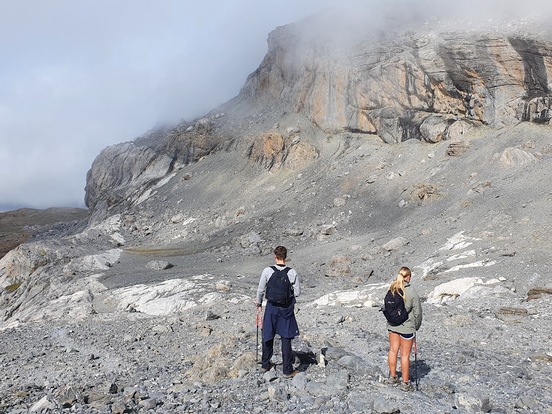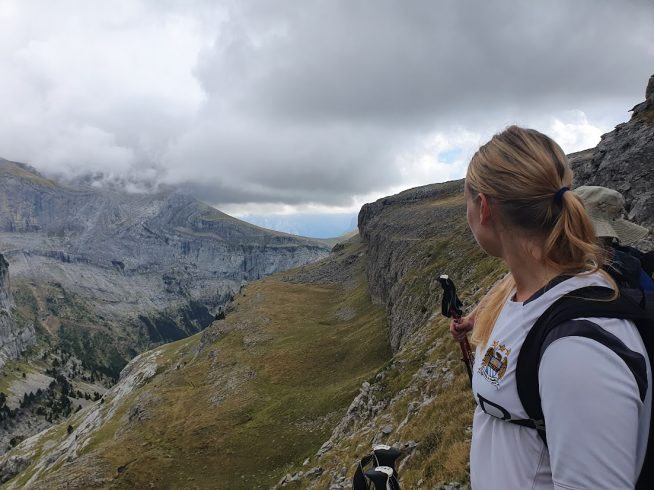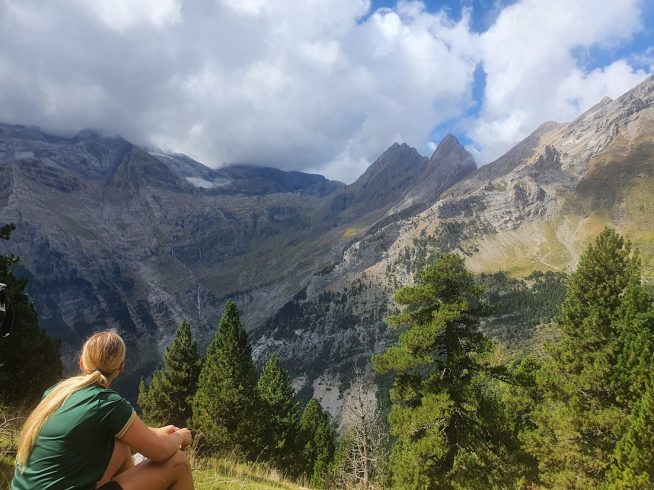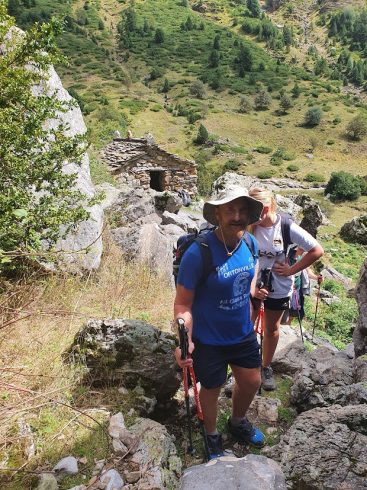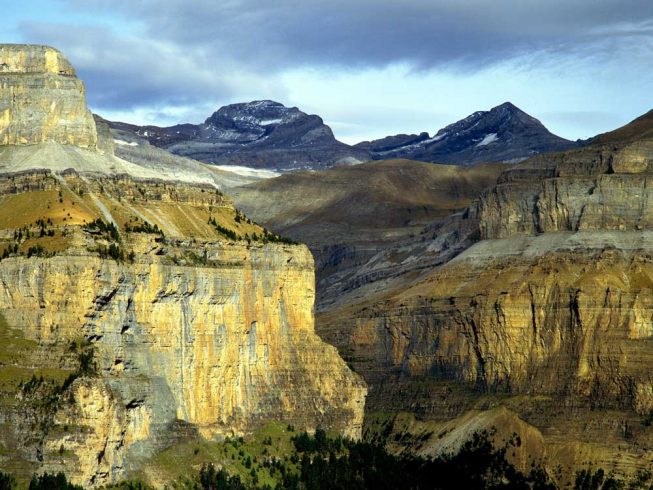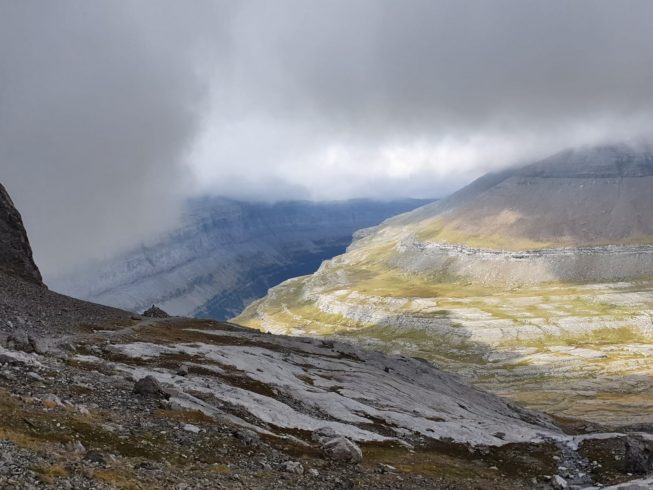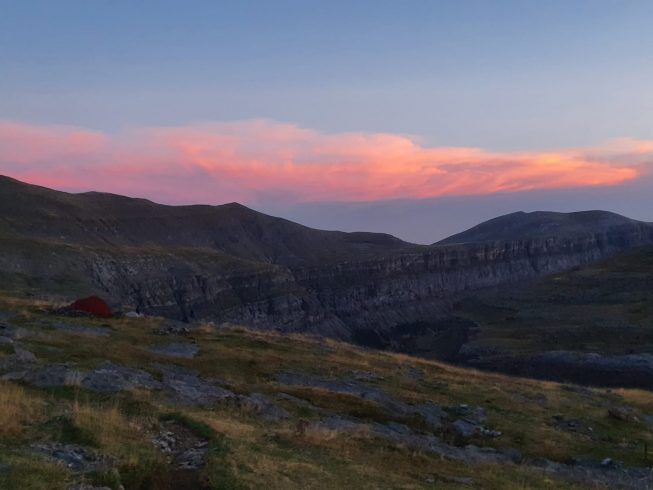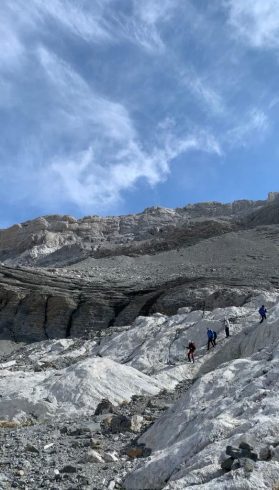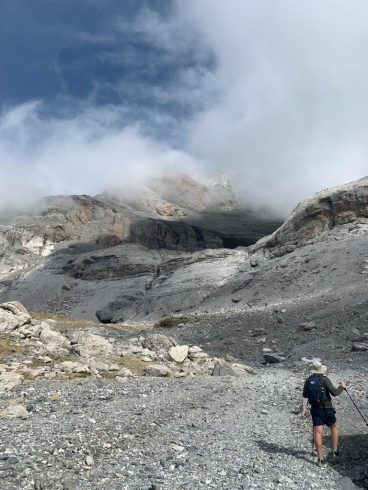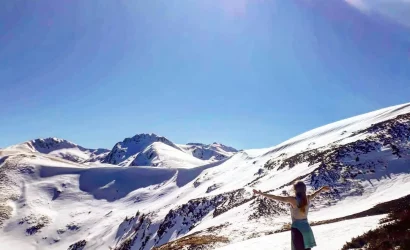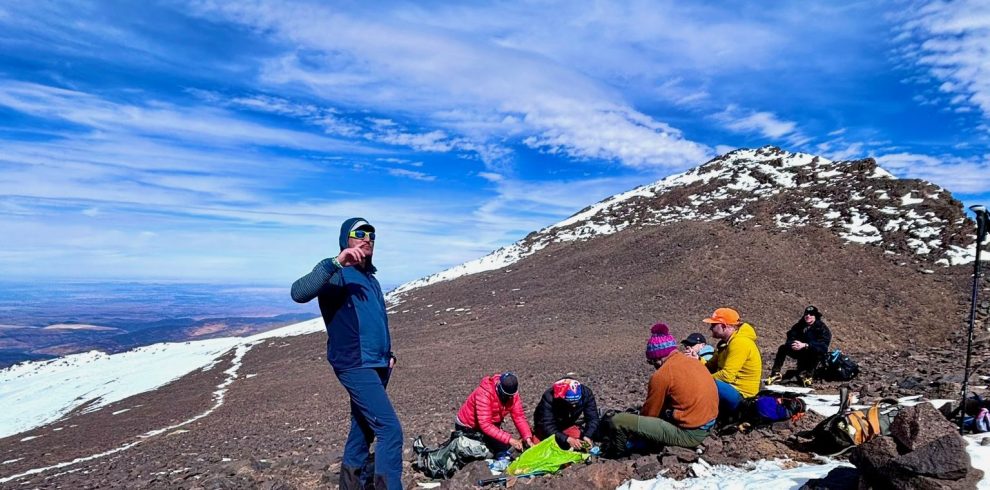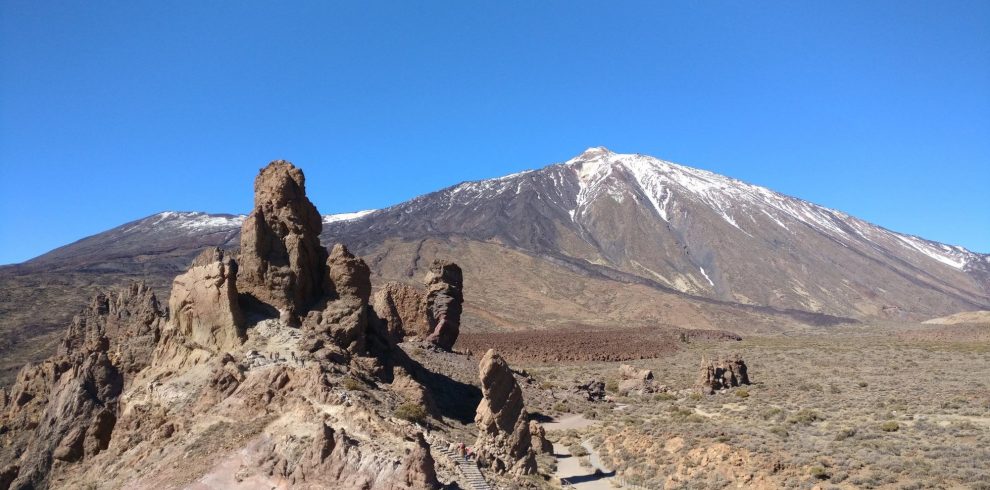Overview
According to legend, Roland, one of Charlemagne’s knights, created the breach with his sword which lies on the border between France and Spain and close to the Breche de Roland where Legend has it that Charlemagne’s nephew and leader of the mighty army that crossed to Spain in 778 to invade Pamplona. The Ordesa national park has over 1500 species of fauna and is a UNESCO world heritage site. It offers a perfect blend of ecosystems nestling within a magnificent backdrop. Monte Perdido 3355m, “Lost Mountain” is the third highest in the Pyrenees. We offer a lower and higher level alternative which has a greater height gain and descent per day. On day three we offer an easier option including a transfer and a tough option startng from our accomodation in the morning but with a large height gain. The area was also of significance in the Spanish Civil war where many fled to France.
Itinerary
We will meet you in Ainsa at 19hrs We stay in a wonderful spa hotel with an excellent restaurant. If you are a group and would prefer to stay in the Refugio de Pineta we can also organise this for a reduced price.
We ascend from the Parador de Bielsa *** to the cascade de Llarri. This is a 7.1km round trip this 7.1-km loop taking on average of 2 h 30 to complete with a chance to rest by the stunning waterfalls. We climb up through woodland before emerging out onto open hill side surrounded by striated folded peaks. After some time ascending some steep sections of hill side we come upon a stream which leads to the impressive cascades. Here it is possible to relax for a while and admire the intense blue water at the base of the falls and look across towards Monte Perdido. We can extend the walk, taking in more beautiful waterfalls to reach the Collada de Pineta, seeing the Cascada del Cinca on the way.
(D)
TOUGH OPTION
After 4 hrs we reach the col de Anisclo (2449m) from where we can take the chains of Punta de las Olas or descend to Foen Blanca and reclimb to the Barranco d’Arrablo to avoid them (14.14km via the baranco). A massive day climbing up rock butresses and a steep wooded path at times protected by a wire to the Col de AnIsclo. This ascent is not for the faint hearted. We are hopefully rewarded by a magnificent view and the chance to descend to once more make an easier but longer ascent to the refuge or take a tougher route including cables and staying high to get to Goriz. +1863m or more and -943m 8-9hrs (B,L,D)
EASIER OPTION
Transfer to Torla in the morning. From here we ascend to refuge de Goriz via the Faja Racon 11km, +580m or via the Faja de Pelay 12.5 km, + 900m. We spend the night at Refugio Goriz beneath Monte Perdido. This walk discovers the grand canyon of Ordesa, a large glacial valley in the Aragonese Pyrenees, at the foot of the Monte Perdido massif. Following a series of fajas or mid-height ledges between the Arazas river and the immense sculpted upper walls, the panoramas are spectacular from start to finish, particularly in autumn with the mosaic of forest colors and snow-capped peaks that dominate the valley. (B,L,D)
Tip: Either route is simply stunning and if you would like to attempt Monte Perdido the next day rather than gaining the lake beneath, the latter easier option will increase your chance of success.
Our objective is the classic ascent of Monte Perdido (3335m), the highest peak in the area. The summit views overlooking the Ordesa, Pineta and Anisclo canyons and into France are stunning - if not hidden... The route climbs up from the refuge through rock bands with pathways to emerge on a rocky scree path which continues on and upwards. The final exhilarating push up to the lake takes a steep rock band where there are some chains in place to assist in the traverse. We may feel content to turn around at the Helera de Anisclo lake, particularly in bad weather. The climb up the ridge and then steep gully is airy in places but stunningly beautiful. We return to Refugio Goriz for the night. 7.7km +1212 m -1212m (B,L,D)
Here we have a possible second summit attempt or descend to Nerin.
Our walk out is through the Añisclo Canyon which was formed by water or the Ordesa valley formed by glaciers. We drop on contouring paths to the valley floor and admire the waterfall which plunges before reaching our transport back to Ainsa. We may make an optional visit to the Bielsa museum on this afternoon or the following morning. The battle of the Bolsa de Bielsa, saw the exodus of local civilians into France and then Republicans through the Port Vieux, and the total destruction of Bielsa village during the Spanish Civil War. In 1938, in the midst of a civil war, Bielsa was bombed by aircraft under Franco's orders, due to the resistance there from the 43rd division of the Republican army. This fact caused the population to begin a mass exodus to France, from which many did not return, and the subsequent exile.
Distance: 17 km / Ascent: 300 m / Descent: 1000 m
In the morning we will relax at our hotel and then leave you in Ainsa for a rest day or you can take a transfer with us to Toulouse.
The dates section
| TRIP DATES | PRICE | |
|---|---|---|
| July 12, 2025 - July 17, 2025 | £1,225 |
Overall, the name Monte Perdido reflects both the physical and historical challenges associated with discovering and accessing this majestic peak. In historical terms, “lost” often referred to places that were not easily found or mapped. Monte Perdido was one of the last major peaks in the Pyrenees to be explored and charted by mountaineers and cartographers. It can also wear a hat of mist on occasion.
Hotel & SPA Peña Montañesa
Refuge Goriz
In the heart of the Ordesa and Monte Perdido National Park , the Góriz Refuge enjoys a privileged position for practicing mountain sports. It serves as a base for the ascent of Monte Perdido by several of its routes – including the normal one – as well as other peaks and notable places: Cilindro, Soum de Ramond, Marboré, Casco, Taillón, Brecha de Rolando, frozen grotto of Casteret, etc. . It is a crossing point for the Trans-Pyrenean Path (GR-11) and for journeys such as the Vuelta al Perdido.
The refuge began to be built in 1961 and has been serving mountaineers for more than 50 years.

